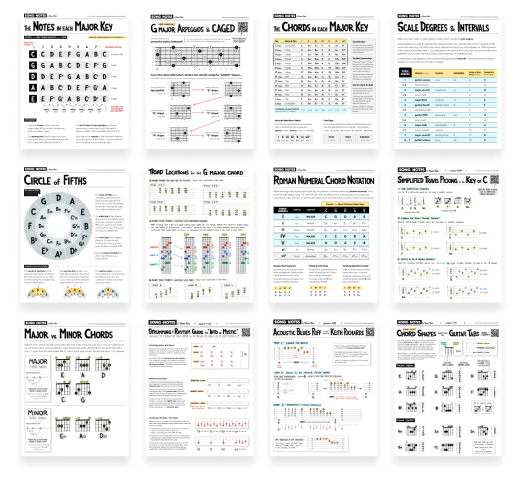Copperhead Road
by Steve Earle • Lesson #213 • Feb 7, 2019
Licensed Song Sheet 6 pages
Follow along with my print-friendly guide for this song! It’s available for purchase at Musicnotes.com, the web’s leading provider of licensed sheet music.
On the fence? Here's a guide I made showing the purchase & print process, including answers to common questions about my song sheets.
Buy at Musicnotes.comAbout This Lesson
In this lesson I’ll teach you to play the Steve Earle song Copperhead Road - complete with the intro tab, chords needed for the verse & chorus, the strumming patterns you’ll use, and a whole lotta additional tips & tricks to get you on your way. This song came in by request on my Patreon page - I hadn’t heard it before, but am sure glad I know it now! Great fun to play, lots of joy to be had working out that droning D riff. Enjoy!
- 0:00 Playthrough & overview
- 2:11 Chords needed
- 4:15 Mastering the D hammer-on
- 5:21 Playing the riff w/ 1 finger
- 6:57 Mastering the D pinky stretch
- 8:53 Learning the full riff
- 14:48 Verse & chorus
- 16:44 Strumming pattern
- 21:02 Final advice
Enjoy My Lessons? Show Your Support!
Most of the lessons on my website are 100% free. If you have the means, please show your support with a tip jar contribution. I put many hours into every lesson — but it only takes you a minute to make a donation. You have my thanks!
Looking for More Song Lessons?
Featured Courses
Fun & Helpful Tools I've Made
Coming soon is Jambox – which shows all the video jam tracks I've made. It's note quite ready for the spotlight, but check it out if you like!
Subscribe to my YouTube channel
Be sure to never miss a lesson by subscribing on YouTube. I put out 2-3 new videos every week. These include full song lessons, as well as covers, practice tips, behind-the-scenes updates. Thanks!
Recent Lessons
-
July 11, 2025
Melody & Chords, Together! ft. Leonard Cohen's "Hallelujah"
-
June 30, 2025
FretMonster Update! New Features & PDF Handbook Now Available
-
June 17, 2025
"London Homesick Blues" from Jerry Jeff Walker / Gary P. Nunn
-
June 16, 2025
[Updated] "Mr. Bojangles" by Jerry Jeff Walker
-
June 12, 2025
Father's Day Sale - 20% Off Gifted Memberhsips!
-
June 6, 2025
"Dancing in the Dark" by Bruce Springsteen
-
May 28, 2025
Beginner Guitar Course - 5 New Lessons!
-
May 15, 2025
"Centerfield" by John Fogerty
-
May 4, 2025
Q&A: Can You Learn Guitar Late In Life?


